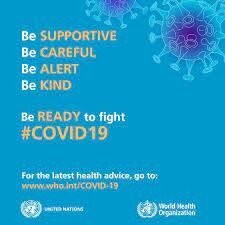Trauma Studies: Physical, Emotional, and Sexual Abuse in Childhood
Abstract
Physical abuse is often caused by beating, punching, kicking, burning, and biting a child, and it is the most discernible form of child abuse (Cutchlow, 2014). One of the basic reasons for physical child abuse is an unawareness of the degree of force a parent or caretaker misuses against a child. The factors that lead to physical abuse include parents’ naivety, social isolation, deficiency of caring skills, upsetting childhood experiences, parental financial crises, drug addiction, alcoholic problems adopted by parents, and domestic violence (Dolan & Frost, 2019). Children are abused not only in homes but also in schools through bullying and corporeal punishment given by brutal teachers (Douglas, 2016). Emotional maltreatment which is also termed as psychological abuse is the second most common form of child abuse which leads to physical and sexual abuse (Bentovim, 2018). It transpires due to emotional neglect, rejection, public insult, personal humiliation, setting arbitrary expectations, confinement, lack of socialisation and absence of exploration. The aforementioned factors affect a child’s aplomb and social competence (Hinds & Giardino, 2017). Some parents do not grasp their kids as separate persons. Their parenting style is often aggressive and intimidating, and it confines their children. Such a behaviour results in emotional abuse and neglect which are the primary reasons for child maltreatment (Bentovim 2018). This is a very serious issue and needs attention of worldwide higher health authorities, agencies and organisations. The symptoms of child sexual abuse vary from that of adult sexual abuse. De facto, children hardly disclose their sexual experiences immediately after the incident takes place because of the lack of puberty. Moreover, disclosure of the encounter is a complicated and upsetting process for children and is often diagnosed in the form of bruises or/and a change in behaviour (Osuji, 2016). Sexual abuse has a number of repercussions on the physique and psyche of child victims. It leads to submissiveness, abusive language, loss of hunger and self-respect, unconsciousness, psychical tiredness, numbness, hysteria, suicidal tendencies, tearfulness, incommunicability, collective trauma, resentment, distress, accusations, deep-rooted abhorrence, frustration, feeling of defeat, confusion, duality, perennial timidity, restlessness, frightening, demoralizing appearance, mournfulness, sleeplessness, transfixion, despondency, motionlessness, indecisiveness, debility, shattered psyche, suffocation, inferiority complex, sense of loss, chilling horror, daymares, nightmares, accusations, guilt, tearfulness, breathlessness, sobs, distressed mood, bleakness, saplessness, and nyctophobia (Singh & Batta, 2017). It has been suggested that the corollaries of child abuse can be alleviated and treated with the application of the treatment therapies such as Psychoeducation, Distress Reduction & Affect Regulation Training, Cognitive Interventions, Emotional Processing, Increasing Identity and Relational Functioning, Mindfulness-based Breath Training, Psychobiology and Psychopharmacology (Briere & Scot, 2014, p. 2).

